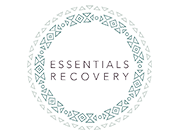In the world of rehabilitation, finding the perfect balance between freedom and structure can make all the difference in a patient’s journey towards recovery. While structure provides the necessary framework for progress and accountability, freedom allows individuals to explore their personal strengths and weaknesses. But how do we navigate this delicate balance? In this article, we will delve into the art of finding equilibrium in rehabilitation and discover techniques that can help patients make the most of their recovery process. By understanding the importance of structure in setting goals and monitoring progress, while also embracing the freedom to experiment and adapt, individuals can truly harness their potential and achieve lasting transformation. So, whether you are a healthcare professional looking to optimize your rehabilitation practices or someone on the road to recovery, join us as we explore the key strategies for striking the perfect balance between freedom and structure in rehabilitation.
Understanding the Importance of Balance in Rehabilitation
Rehabilitation, whether it be physical, occupational, or mental, is a complex process that requires careful consideration of various factors. One of the most crucial aspects of successful rehabilitation is finding the right balance between freedom and structure. It is important to recognize that too much freedom can lead to a lack of accountability and direction, while excessive structure can stifle creativity and hinder progress. Striking the perfect balance creates an environment that promotes growth, self-discovery, and empowerment.
The Benefits of Freedom in Rehabilitation
Freedom plays a vital role in the rehabilitation process by allowing individuals to explore their capabilities, express their individuality, and take ownership of their recovery. When given the freedom to make choices and decisions regarding their treatment, patients are more likely to feel motivated and engaged. This sense of autonomy can empower individuals to take an active role in their rehabilitation journey, leading to increased confidence and a greater sense of self-efficacy.
Moreover, freedom allows for experimentation and adaptation. Each individual’s rehabilitation needs are unique, and what works for one person may not work for another. By providing patients with the freedom to try different approaches, therapies, or exercises, healthcare professionals can tailor treatment plans to suit individual needs. This flexibility enables patients to discover what methods are most effective for their recovery, leading to better outcomes.
The Benefits of Structure in Rehabilitation
While freedom is essential, structure provides the necessary framework for progress and accountability in rehabilitation. Structure helps individuals stay organized, set achievable goals, and monitor their progress. It provides a roadmap that guides patients through their rehabilitation journey, ensuring that they stay on track and make consistent strides towards recovery.
Structured rehabilitation programs also offer a sense of stability and predictability, which can be comforting for patients who may feel overwhelmed or uncertain about their future. Having a well-defined routine and clear expectations can instill a sense of purpose and direction, fostering motivation and commitment to the rehabilitation process.
The Challenges of Finding the Right Balance
Finding the right balance between freedom and structure in rehabilitation is not always easy. Healthcare professionals face the challenge of tailoring treatment plans to meet individual needs while still providing the necessary structure for progress. It requires careful assessment, ongoing evaluation, and open communication between the healthcare team and the patient.
Patients, on the other hand, may struggle with finding their own balance. They may feel torn between wanting the freedom to explore and the need for structure and guidance. It is essential to address these concerns and collaborate with patients to develop a rehabilitation plan that incorporates both elements effectively.
Strategies for Incorporating Freedom and Structure in Rehabilitation Programs
To strike the perfect balance between freedom and structure in rehabilitation, healthcare professionals can employ various strategies. One effective approach is to incorporate goal-setting and progress monitoring into the rehabilitation program. By involving patients in the goal-setting process, they have a sense of ownership and are more likely to stay motivated. Regular progress assessments ensure that individuals are accountable for their actions and allow for adjustments to be made as needed.
Another strategy is to provide a range of treatment options and modalities while still maintaining a structured framework. This allows patients to have the freedom to choose what works best for them while ensuring that they are following a comprehensive plan. Offering a variety of therapies, exercises, and techniques can cater to different learning styles and preferences, making the rehabilitation process more engaging and effective.
The Role of Individualized Treatment Plans in Finding Balance
Individualized treatment plans are key to finding the perfect balance between freedom and structure in rehabilitation. Each person’s journey is unique, and a one-size-fits-all approach may not yield the best results. By tailoring treatment plans to meet individual needs, healthcare professionals can provide the necessary structure while allowing room for personalization and adaptation.
Assessing the patient’s strengths, weaknesses, goals, and preferences is crucial in developing an individualized treatment plan. This comprehensive approach takes into account the individual’s physical, emotional, and cognitive abilities, ensuring that the rehabilitation program is both effective and enjoyable.
The Importance of Communication and Collaboration in Navigating Freedom and Structure
Communication and collaboration between healthcare professionals and patients are vital in navigating the delicate balance between freedom and structure. It is essential to establish an open and trusting relationship where patients feel comfortable expressing their needs, concerns, and preferences. Regular check-ins, progress reviews, and feedback sessions provide opportunities for dialogue and ensure that the rehabilitation program remains aligned with the individual’s goals and aspirations.
Collaboration also extends beyond the healthcare team and includes the patient’s support network. Involving family members, friends, or caregivers in the rehabilitation process can provide additional support and create a sense of community. By working together, everyone can contribute to finding the right balance and supporting the individual’s recovery journey.
Real-Life Examples of Successful Balance in Rehabilitation
Real-life examples of successful balance in rehabilitation can inspire and guide healthcare professionals and patients alike. One such example is the use of adaptive sports for individuals with physical disabilities. These sports provide a structured framework for physical activity and goal-setting while allowing participants to explore their potential and push their boundaries. Adaptive sports empower individuals to challenge themselves, build resilience, and achieve remarkable feats of athleticism.
Another example is the integration of mindfulness practices in mental health rehabilitation programs. Mindfulness offers individuals the freedom to explore their thoughts and emotions while providing a structured framework for self-reflection and personal growth. By incorporating mindfulness techniques, individuals can develop self-awareness, reduce stress, and cultivate a sense of calm and balance in their lives.
Resources and Tools for Professionals to Help Clients Find Balance
For healthcare professionals looking to optimize their rehabilitation practices, several resources and tools can assist in helping clients find balance. The American Physical Therapy Association (APTA), for example, provides guidelines and educational materials on creating individualized treatment plans and promoting patient-centered care. These resources offer evidence-based strategies and best practices for integrating freedom and structure in rehabilitation programs.
Additionally, technological advancements have paved the way for innovative tools that can aid in finding the right balance. Mobile applications, wearable devices, and virtual reality platforms offer interactive and engaging experiences, allowing patients to have the freedom to explore while still adhering to a structured rehabilitation plan. These tools can track progress, provide feedback, and offer personalized exercises, enhancing the overall rehabilitation experience.
Conclusion: Embracing the Journey to Balance in Rehabilitation
Finding the perfect balance between freedom and structure in rehabilitation is an ongoing process that requires understanding, collaboration, and adaptability. By recognizing the benefits of both elements and incorporating strategies to achieve equilibrium, healthcare professionals and patients can optimize the rehabilitation journey. Embracing the journey to balance empowers individuals to take ownership of their recovery, discover their potential, and achieve lasting transformation. So, whether you are a healthcare professional seeking to enhance your rehabilitation practices or someone on the road to recovery, remember that the art of finding balance lies in understanding the importance of structure, embracing the freedom to explore, and navigating the journey together. Call us at 855-509-1697.


